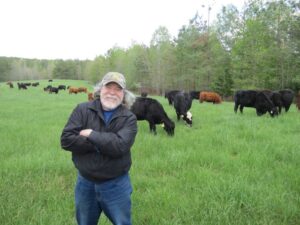You know, when you’re scrolling online, maybe late at night, and a headline just grabs you. Well, lately, especially if you look forward to Girl Scout cookie season like I do. You might have seen these posts from February 2025.
The glyphosate claims and heavy metals, too. It definitely makes you pause before grabbing another cookie.
It absolutely does. And look, that’s a normal reaction when you hear pesticides, heavy metals, especially with food.
Yeah. Food for your family, right? Caution flags go up immediately. It’s understandable.
Okay. So, let’s really dig into that because that’s what we’re doing today. This deep dive. We’re looking past the, you know, the social media noise. Trying to get to the science of it.
Yes. What’s actually going on with these cookies? Our mission here is to sort the facts from the fear, understand the science, and figure out if there’s anything we genuinely need to worry about. Exactly. We’re not trying to dismiss anyone’s concerns, but we want to give it some real context, you know, based on the data we have.
Context, right? Science, not just scary headlines.
So, you can make up your own mind without hopefully needless panic.
Okay, first big one. Glyphosate. How on earth does that stuff get into a cookie? The idea someone’s adding it in is well, it’s weird, right? And that’s the first uh really critical point. It’s not an ingredient. Nobody is like one expert said, spring sprinkling glyphosate into cookie dough.
Instead, if it’s there at all, it’s in these tiny tiny trace amounts and it gets there indirectly through the farm ingredients.
Okay, indirectly. How? Break that down.
Well, there are basically three main ways this can happen. First is something called preharvest desiccation.
So maybe about 30% of farmers, give or take, might spray glyphosate on crops like wheat or oats right before harvest.
Why would they do that?
It helps everything dry down evenly. You get a more uniform crop, better yield, makes harvesting more efficient.
Okay. So, it’s used on the ingredients. What’s path number two?
Second is just um environmental spread. Think of it like pollen. Glyphosate can drift on the wind, get into water sources. So, even if one farm doesn’t use it, tiny amounts might just be present in the environment from nearby areas. It’s hard to avoid completely sometimes.
Okay. Like background noise almost. Yep. Makes sense. And the third way,
Cross contamination. Tiny microscopic residues might linger on milling equipment, maybe baking equipment, even after cleaning,
from processing other stuff before.
Exactly. Though, it’s also worth mentioning glyphosate isn’t super stable. It tends to break down, especially with heat, like, you know, baking.
Baking probably helps break it down. So, these are really small indirect routes, not someone dumping it in the mixer.
Correct. That feels a bit better already, doesn’t it?
It does. But then you see the numbers they throw around in those posts, parts per per million.
Yeah, sounds bad. Let’s talk about the actual amounts.
Yeah, the numbers. This is where context is absolutely everything. So, the EPA, Environmental Protection Agency, they set something called an acceptable daily intake or ADI. That’s the amount they estimate you could consume every single day for your whole life and not expect any harm. For glyphosate, that ADI is 1.75 milligrams per kilogram of body weight per day.
Okay? 1.75 mg per kilogram. Let’s make that real. Say someone who weighs, I don’t know, 130 lbs. That’s about 70 kilos, right?
Right. 70 kg. So for that person, the daily acceptable intake would be, let’s see, 70* 1.75 about 103.25 milligrams of glyphosate per day.
Over 100 milligrams a day. Okay. Now, what did they find in the thin mints?
The test showed around. 28 parts per million. That sounds like a number, but let’s translate it. In a standard serving, say four cookies,
which is, let’s be honest, the starting point.
Ah, maybe. But in those four cookies, that translates to about 0.00896 milligrams of glyphosate total.
Okay. My brain hurts, but that sounds incredibly tiny compared to the 103 mg daily limit.
Exactly. So, let’s do the fun math. How many of those single cookies would that 70 kilo person need to eat in one day to hit their 103.25 mg limit?
Uh-oh. This is going to be big, isn’t it? works out to something like 46,116 thin mints.
46,000 in one day. Okay. Right. Nobody is eating 46,000 thin mints. I think even I have my limits.
Precisely. It puts the risk into perspective. And there’s another piece to this. Our testing technology is just ridiculously good now.
It’s better than it used to be.
Oh, way better. We used to measure in parts per million. Now we can often detect parts per trillion, even parts per quadrillion. Think of like an Olympic swimming pool being able to detect one single drop of dye in all that water. That’s the kind of sensitivity we’re talking about.
So, the headlines might pop up just because we can find these microscopic traces now, not because there’s suddenly more of it or it’s dangerous.
That’s a huge part of it. The sensitivity drives the detection, which can drive the headlines even if the actual health risk hasn’t changed or is negligible at those levels.
That analogy helps a lot. It’s not necessarily more stuff in the food. We just have sharper eyes scientifically speaking.
You got it. Okay. So, maybe we should switch slightly talk about why farmers use glyphosate in the first place. It’s easy to just focus on the scary headlines.
Good point. They aren’t just spraying it around for fun, presumably. What are the benefits?
Well, it actually plays a pretty big role in modern farming. A key thing is it allows for less tilling of the soil.
Less digging up the fields. Why is that good?
Tilling can lead to soil erosion, loss of top soil, big problems. By using glyphosate to handle weeds, farmers can use no till or reduce tail methods that helps preserve the soil, reduces erosion. And it can even mean lower greenhouse gas emissions from farming operations.
Yeah, that’s a side you don’t hear much about in the scary posts.
Not usually. No. Plus, it helps increase crop yields. Better weed control means more food grown on the same land. That’s vital for, you know, feeding everyone. Global food security.
So, it’s tied into bigger issues, efficiency, sustainability.
Absolutely. There was a review in a journal, Frontiers and Aron. me back in 2022 that really laid out its importance. And frankly, as the expert we looked at said, there isn’t really a scalable alternative right now that does the same job with the same benefits, especially the reduced tilling part.
So, if we just banned it, we’d likely see higher food prices, probably more food waste from lower yields, maybe needing to clear more land for farming. It’s complicated.
Definitely more complex than just weed killer bad.
Okay. What about the other thing mentioned, heavy metals, right? Heavy metals: lead, cadmium, arsenic, mercury. This is a bit different. These are naturally occurring elements.
Natural. So, not from pesticides or farming chemicals.
Mostly not. No, they’re just in the soil in the water. Plants absorb them as they grow, just like they absorb nutrients. And this happens whether the crop is grown conventionally or organically.
Oh, interesting. So, organic doesn’t automatically mean no heavy metals.
Correct. You find trace amounts in lots of common foods, root vegetables like carrots, sweet potatoes, especially in the skin, leafy Greens like spinach, grains, brown rice, and oats can sometimes pick up arsenic from the soil.
Wow. Okay. Even seafood, right? Mercury.
Yep. Certain fish like tuna, swordfish can accumulate mercury from the water. It’s pretty widespread in trace amounts.
So, if it’s natural and in lots of foods, when does it become a concern? Is it the amount?
It’s about the amount and the frequency. The real concern is repeated highle exposure over a long time consistently. eating large amounts of foods that happen to be higher in a specific metal. And this is especially important for little kids. Their bodies are still developing. They’re more sensitive.
So again, it’s not about the occasional cookie setting off alarm bells.
Not usually. No, it’s the overall dietary pattern. And there are things you can do to minimize exposure.
Like what what’s practical?
The biggest thing is eating a varied diet. Don’t eat the exact same things every single day. Mix it up. Rotate your foods.
Makes sense. Reduces the chance of getting too much of any one thing.
Exactly. Also, peeling root vegetables, especially if you’re making baby food, can help since metals sometimes concentrate in the skin.
Okay, peeling carrots and potatoes. Easy enough.
Rinsing all your produce while even organic helps wash off any lingering soil which might contain metals. A little vinegar in the water can help too. And then, yeah, limiting those high mercury fish, particularly for pregnant women and young children. Standard advice there.
These are all pretty sensible things. And again, our fancy testing plays a role here, too, right? Right. Finding these natural traces.
Totally like the experts said, we can just see so much more now. We have more information than ever. The trick is interpreting it correctly. Finding a trace amount isn’t the same as finding a dangerous amount.
Context. Again, it always comes back to context. Are the regulators like watching this stuff? FDA, EPA.
Oh yeah, definitely. Both the FDA and EPA are heavily involved. The FDA has this program called Closer to Zero.
Closer to zero for what?
Specifically targeting lead. arsenic, cadmium, and mercury in foods for babies and young kids. They set action levels like for lead in infant cereal, it’s 10 parts per billion. Okay?
They guide manufacturers on how to reduce levels, then monitor foods, and the FDA is clear. There’s really no safe level of lead for kids. So, the goal is always to get it as low as possible, push it closer to zero.
That’s good to know they’re actively working on it for the most vulnerable group. Yeah. What about the EPA side for pesticides like glyphosate?
The EPA regulates pesticides. Their latest big review on glyphosate concluded it doesn’t pose a cancer risk from dietary exposure at the levels we see. They say it’s safe when used correctly following the label and they keep studying it including its breakdown products the metabolites. So these agencies provide oversight data updates. It’s an ongoing process, right? It’s not static. Science evolves.
Okay, so let’s pull this all together for the listener. What are the practical takeaways here? If you’re that person who saw the scary post, what should you do?
I think the biggest practical advice is is focus on variety for the whole family. Avoid getting stuck in a food rut eating the same few things constantly. Mix up the fruits, veggies, grains.
Exactly. Rinse your produce thoroughly. All of it. And yeah, processed treats like cookies. Enjoy them, sure, but in moderation. Part of a balanced diet, not the main course.
And maybe the best advice we heard, that quote.
Ah, yes. Don’t get your science from Tik Tok or, you know, unsourced social media posts in general.
Absolutely. Go to the credible sources, FDA reports, EPA assessments. Look for peer-reviewed studies and journals. The outline mentioned comprehensive reviews in food science and food safety, frontiers in aronomy, food chemistry. Look at established health organizations, NIH, WH, EFSA in Europe.
Be skeptical of stuff without sources or that sounds super dramatic, right? And be careful comparing things like food safety limits to say drinking water standards. They’re set differently for different reasons. Apples and oranges sometimes.
Okay, so let’s try try to summarize the absolute key points.
Okay. One, glyphosate is regulated. It plays a role in modern farming and the trace levels found in foods like these cookies are considered safe by regulatory bodies.
Two, we can test for really tiny amounts. Now, that doesn’t mean food is suddenly dangerous. It means we have more sensitive tools and more data. Context matters.
And three, the best strategy for overall food safety and health isn’t obsessing over trace amounts in one specific food. It’s focusing on a varied balanced diet rich in whole foods and moderating the processed stuff.
So for everyone listening, yeah, those concerns you felt totally valid starting point, but the answer seems to be context, science, and variety, not panic.
Well put. It’s about informed choices, not fear-based ones.
So enjoy a thin mint or several, just maybe not 46,000.
Probably a good guideline. Enjoy them in moderation as part of that bigger picture of a healthy, varied diet.
All right. And maybe a final thought to leave everyone with. Now that you’ve got this deeper understanding of the science and the regulation around this food scare, what other food topics might deserve the same kind of careful look beyond the headlines?
That’s a good question. Staying curious, staying critical. That’s always a healthy approach to what we eat.




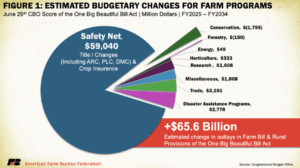






 Advocates claim it reduces inflammation, improves mental clarity, and helps manage glucose levels, and promotes weight loss. However, the reported benefits of this diet are more anecdotal than clinical. In fact, multiple studies cite the dangers of this diet, including
Advocates claim it reduces inflammation, improves mental clarity, and helps manage glucose levels, and promotes weight loss. However, the reported benefits of this diet are more anecdotal than clinical. In fact, multiple studies cite the dangers of this diet, including 
 For instance, high consumption of saturated fats like beef tallow – which
For instance, high consumption of saturated fats like beef tallow – which  Yes, ACV can slightly
Yes, ACV can slightly  Experts generally agree that most people, especially women and older adults,
Experts generally agree that most people, especially women and older adults, 


 Eligibility and the amount of assistance from SNAP are based on gross and net monthly income. In most cases,
Eligibility and the amount of assistance from SNAP are based on gross and net monthly income. In most cases, 




 This isn’t just about cooking with oil. It’s part of a broader philosophical divide. As institutional trust declines, many are turning to tradition and nature for guidance—assuming, sometimes wrongly, that these values offer more than modern science.
This isn’t just about cooking with oil. It’s part of a broader philosophical divide. As institutional trust declines, many are turning to tradition and nature for guidance—assuming, sometimes wrongly, that these values offer more than modern science.



 RFK is right: so many Americans are unhealthy.
RFK is right: so many Americans are unhealthy.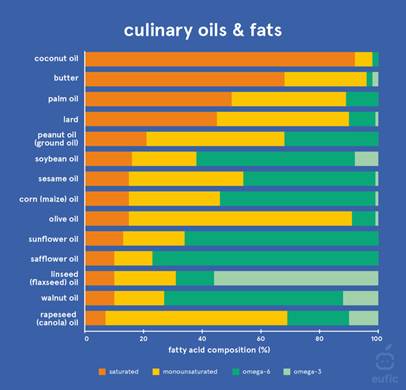










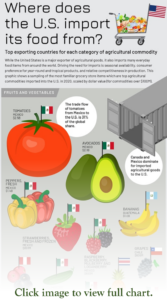


 The Thin Mint headlines may be new, but glyphosate conversations are years old.
The Thin Mint headlines may be new, but glyphosate conversations are years old. Both the
Both the  It’s also important to rinse all
It’s also important to rinse all 
 It doesn’t just kill weeds; it kills anything green, including farm crops such as corn, soybeans, cotton, canola, sugar beets, and alfalfa. These crops have all been genetically modified so that the farmer can spray glyphosate after the crop emerges from the ground and kill the weeds, but not the crop.
It doesn’t just kill weeds; it kills anything green, including farm crops such as corn, soybeans, cotton, canola, sugar beets, and alfalfa. These crops have all been genetically modified so that the farmer can spray glyphosate after the crop emerges from the ground and kill the weeds, but not the crop.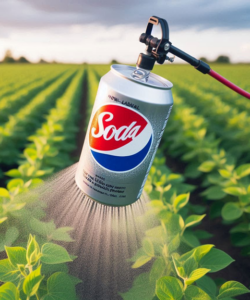
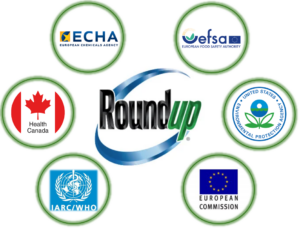
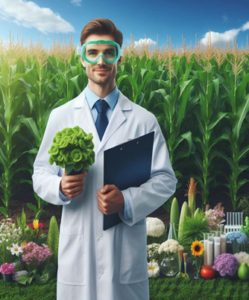 While there were different views on its effect on soil health, all agreed that it is the least toxic of the herbicides on the market.
While there were different views on its effect on soil health, all agreed that it is the least toxic of the herbicides on the market.
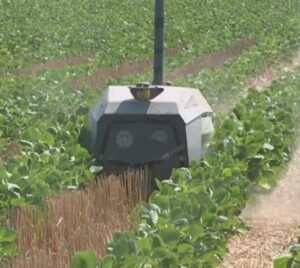 One farmer invented
One farmer invented 
 Peter Attia, MD, who wrote Outlive: The Science and Art of Longevity, points to VO2 max as the best predictor of longevity.
Peter Attia, MD, who wrote Outlive: The Science and Art of Longevity, points to VO2 max as the best predictor of longevity.

 Hanging from a bar measures your grip strength, which measures your overall muscle ratio – a good indicator of overall fitness.
Hanging from a bar measures your grip strength, which measures your overall muscle ratio – a good indicator of overall fitness.

 As for the salad…
As for the salad…
